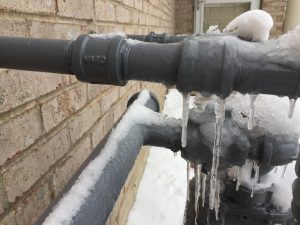Tips to Keep Pipes from Cold Weather Damage: Important Guidance
Tips to Keep Pipes from Cold Weather Damage: Important Guidance
Blog Article
We have found this article about Winter Plumbing Precautions: Preventing Frozen Pipes directly below on the web and figured it made perfect sense to share it with you here.

Winter can damage your plumbing, especially by freezing pipelines. Below's just how to prevent it from occurring and what to do if it does.
Introduction
As temperature levels decline, the danger of frozen pipes rises, potentially causing pricey repair services and water damage. Understanding exactly how to stop frozen pipelines is vital for house owners in chilly environments.
Understanding Frozen Pipelines
What triggers pipelines to ice up?
Pipes freeze when revealed to temperatures listed below 32 ° F (0 ° C) for expanded durations. As water inside the pipelines freezes, it increases, putting pressure on the pipeline wall surfaces and possibly triggering them to burst.
Risks and problems
Frozen pipelines can result in supply of water interruptions, residential or commercial property damages, and costly repair work. Ruptured pipelines can flooding homes and cause considerable architectural damages.
Indicators of Frozen Pipes
Identifying frozen pipelines early can stop them from breaking.
How to determine icy pipelines
Search for reduced water circulation from faucets, uncommon odors or noises from pipes, and noticeable frost on exposed pipelines.
Prevention Tips
Shielding susceptible pipelines
Wrap pipes in insulation sleeves or utilize warm tape to secure them from freezing temperature levels. Concentrate on pipelines in unheated or external locations of the home.
Home heating methods
Keep indoor rooms effectively heated up, especially locations with pipes. Open cabinet doors to allow cozy air to circulate around pipes under sinks.
Shielding Exterior Plumbing
Garden hose pipes and exterior taps
Disconnect and drain yard pipes prior to winter season. Mount frost-proof faucets or cover outdoor faucets with insulated caps.
What to Do If Your Pipelines Freeze
Immediate activities to take
If you think frozen pipelines, keep faucets available to relieve stress as the ice thaws. Utilize a hairdryer or towels soaked in hot water to thaw pipelines slowly.
Long-Term Solutions
Architectural modifications
Think about rerouting pipelines far from outside wall surfaces or unheated locations. Add added insulation to attic rooms, cellars, and crawl spaces.
Updating insulation
Invest in top notch insulation for pipes, attics, and walls. Correct insulation assists keep consistent temperature levels and minimizes the threat of frozen pipelines.
Verdict
Protecting against frozen pipelines calls for proactive procedures and fast reactions. By understanding the causes, indications, and safety nets, house owners can shield their pipes during cold weather.
5 Ways to Prevent Frozen Pipes
Drain Outdoor Faucets and Disconnect Hoses
First, close the shut-off valve that controls the flow of water in the pipe to your outdoor faucet. Then, head outside to disconnect and drain your hose and open the outdoor faucet to allow the water to completely drain out of the line. Turn off the faucet when done. Finally, head back to the shut-off valve and drain the remaining water inside the pipe into a bucket or container. Additionally, if you have a home irrigation system, you should consider hiring an expert to clear the system of water each year.
Insulate Pipes
One of the best and most cost-effective methods for preventing frozen water pipes is to wrap your pipes with insulation. This is especially important for areas in your home that aren’t exposed to heat, such as an attic. We suggest using foam sleeves, which can typically be found at your local hardware store.
Keep Heat Running at 65
Your pipes are located inside your walls, and the temperature there is much colder than the rest of the house. To prevent your pipes from freezing, The Insurance Information Institute suggests that you keep your home heated to at least 65 degrees, even when traveling. You may want to invest in smart devices that can keep an eye on the temperature in your home while you’re away.
Leave Water Dripping
Moving water — even a small trickle — can prevent ice from forming inside your pipes. When freezing temps are imminent, start a drip of water from all faucets that serve exposed pipes. Leaving a few faucets running will also help relieve pressure inside the pipes and help prevent a rupture if the water inside freezes.
Open Cupboard Doors
Warm your kitchen and bathroom pipes by opening cupboards and vanities. You should also leave your interior doors ajar to help warm air circulate evenly throughout your home.

I came across that write up on Helpful Tips to Prevent Frozen Pipes this Winter when doing a lookup on the internet. Feel free to pause to distribute this blog if you appreciated it. Thanks for being here. Return soon.
About Report this page